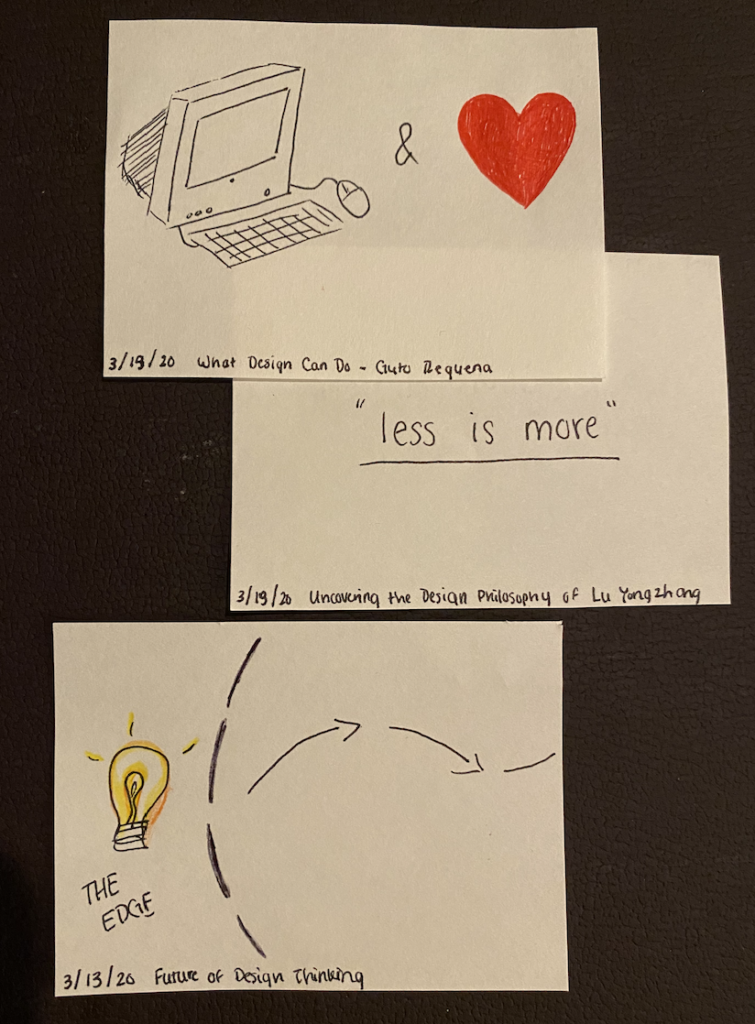
I started off watching What Design Can Do with Guto Requena. He discusses the potential of how technology and love can be brought together with design, and how design should stimulate empathy and love. Creative energy should be put towards creating positive social impact.
The next video I watched was Uncovering the Design Philosophy of Lu Yongzhong. He emphasized how design expresses something without the use of words. It expresses care toward humanity and life aspiration. There is a story behind every line and detail, hence less is more. Yongzhong had created a “flute” incense holder back in 1999. The design allows the smoke to come out of the different holes of the “flute”, allowing one to feel the passage of time and how we can slow down.
Something that resonated with me from What is the Future of Design Thinking is that it’s important to design beyond from today’s needs. Looking towards the “edge” and what the potentials are, and then making decisions towards those extremes. All while understanding that this “edge” will continue to grow, as our shifts will need to as well.




